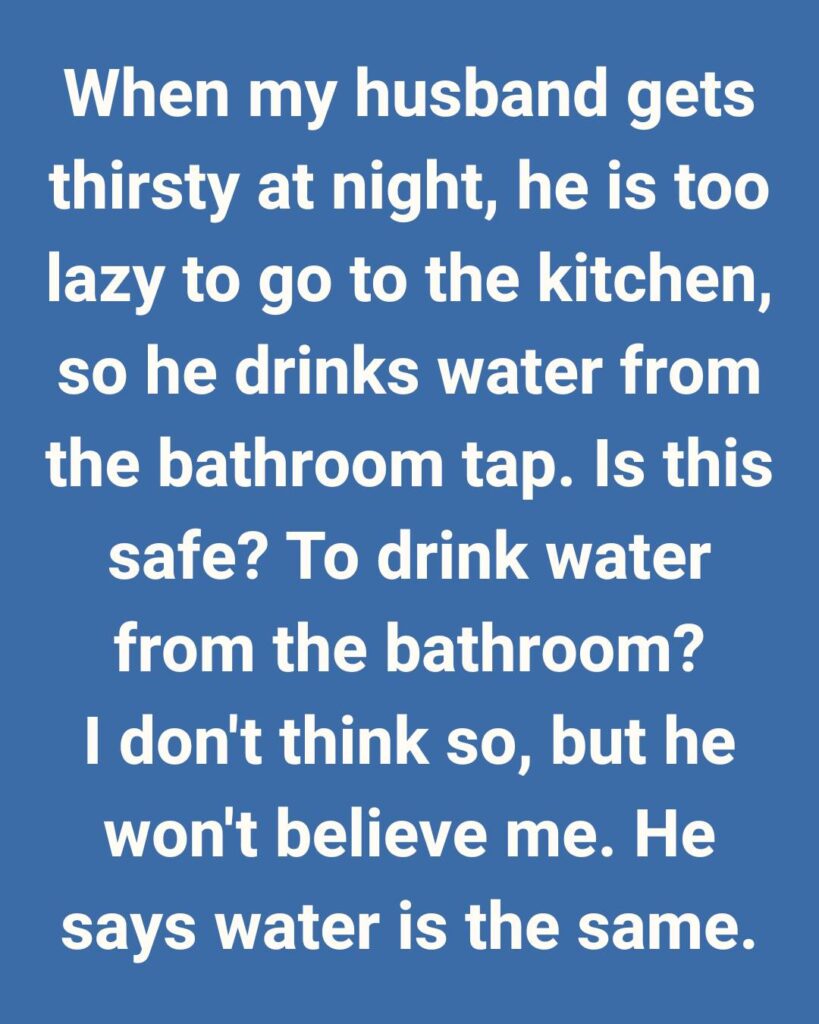It started as an innocent midnight habit — my husband would wake up thirsty, shuffle half-asleep to the bathroom, and drink straight from the tap instead of walking to the kitchen. At first, I found it funny, even a little endearing.

But after months of watching him do it, something about that routine began to bother me. I couldn’t shake the feeling that bathroom water just wasn’t quite the same as the crisp, filtered kind from our kitchen sink.
“Water’s water,” he would always shrug.
Still, one night, curiosity — mixed with a touch of unease — got the better of me. I decided to find out whether he was right or if my instincts had a point.
What I discovered surprised me. Although both taps usually draw from the same water supply, the difference often lies in the plumbing. Kitchen faucets are typically connected directly to the main cold-water line, giving a cleaner, fresher flow.

Bathroom taps, on the other hand, can be linked to older or secondary pipes — sometimes even to a storage tank in the attic. Over time, the water sitting in those pipes can accumulate residue, bacteria, or trace metals. It may look perfectly clear, but that doesn’t always mean it’s as pure as it seems.
Determined to prove my point, I set up a simple experiment. I filled two glasses — one from the kitchen, one from the bathroom — and placed them side by side. The difference was subtle but obvious: the kitchen water gleamed, while the bathroom glass looked faintly cloudy.
When I tasted them, the bathroom water had a slight metallic tang. My husband wasn’t convinced, so I ordered a home testing kit. The results confirmed what I’d suspected — the bathroom sample showed slightly higher hardness and trace metal content. Nothing dangerous, but not ideal for drinking regularly.
Experts generally agree: bathroom tap water isn’t usually unsafe, but it’s best kept for brushing teeth or washing up. If you do need to drink it, let it run for a few seconds first to flush out any stagnant water, or install a small filter.
In the end, the simplest solution proved to be the best — keeping a water bottle by the bed. That’s what my husband does now. Ever since one restless night when he took a sip, made a face, and spat out a mouthful of metallic-tasting bathroom water, he’s never argued again. Turns out, convenience isn’t always worth the compromise.


